The Concept of User Interface (UI) and User Experience (UX) Design in Modern Web
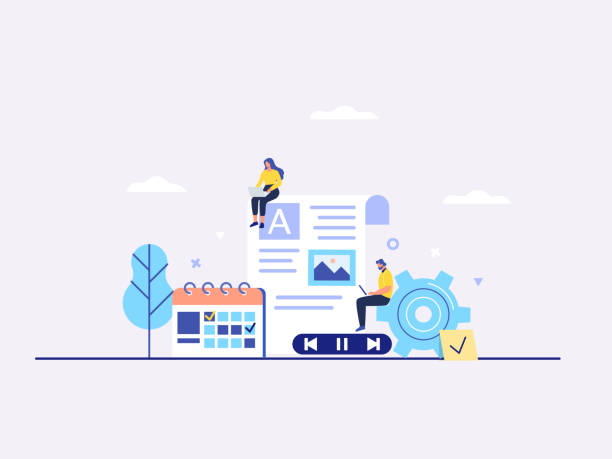
In today’s digital world, #User_Interface_Design (UI) and #User_Experience (UX) are not just fancy terms; they are the main pillars of any website’s success.
When we talk about modern UI website design, we are in fact referring to an approach that goes beyond mere visual aesthetics and emphasizes the user’s overall experience when interacting with the website.
User Interface (UI) refers to the look and feel of a digital product, including all visual elements the user interacts with: buttons, icons, texts, images, layouts, and color palettes.
A successful UI should be both beautiful and functional, allowing the user to easily find their way and reach their goal without confusion.
In contrast, User Experience (UX) is a broader concept that encompasses all aspects of a user’s interaction with a product.
This includes the user’s feeling when using the website, the ease of finding information, the speed of page loading, and even their emotions after completing a specific task.
The main goal of UX is to ensure that the user can not only easily use the website but also enjoys it and gains a positive experience that encourages them to return.
Today, in the age of the #modern web, these two concepts are so intertwined that separating them is almost impossible.
Successful websites are those that not only pay attention to visual beauty but also carefully engineer all details of the user’s experience from start to finish to ensure that every visitor will have a smooth, enjoyable, and useful journey on the website.
This comprehensive approach is the only way to create a sustainable and effective online presence.
Did you know that poor online store design can scare away up to 70% of your potential customers? Rasaweb transforms your sales with professional and user-friendly e-commerce website design.
✅ Significant increase in sales and revenue
✅ Full optimization for search engines and mobile
⚡ [Get free consultation from Rasaweb]
Key Principles in Modern UI Design
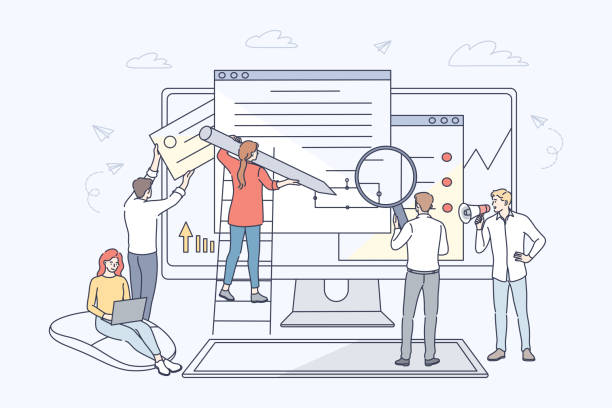
Modern UI website design is based on a set of fundamental principles, adhering to which can make a significant difference in a project’s success.
The first and perhaps most important principle is #User_Centered_Design; this means that all design decisions should be made based on users’ needs, behaviors, and expectations.
Understanding the target audience through deep research is the cornerstone of this approach.
The second principle is simplicity and #Minimalist_Design.
In today’s cluttered world, users are looking for websites that convey information quickly and clearly, without visual chaos.
Removing unnecessary elements, using appropriate white space, and focusing on core content helps the user reach their goal more easily.
The third principle is consistency and integration; meaning that design elements across the website should follow a specific visual style and language.
This includes fonts, colors, icons, and how buttons interact.
Consistency makes the website appear professional and trustworthy, providing a smoother user experience.
Furthermore, #Responsiveness is a vital principle.
Given the diversity of smart devices, a modern website must be able to display correctly and function properly on any screen size, from desktops to mobile phones and tablets.
This is reinforced by the “mobile-first” approach, where design is first done for smaller devices and then expanded to larger screens.
Finally, Accessibility should be considered at all stages of design to ensure the website is usable by all users, including those with disabilities.
Adhering to these principles helps create a powerful and effective user interface that is not only beautiful but also completely functional and enjoyable.
For more information on UI design principles, you can refer to reputable articles on sites like Nielsen Norman Group.
The Role of User Experience (UX) in Website Success
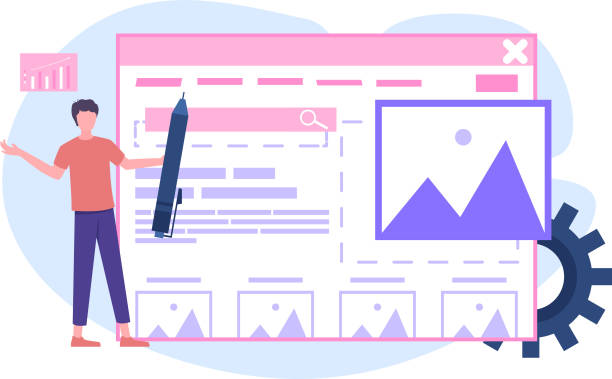
User Experience (UX) is not just a part of modern UI website design; in fact, it is the heart of any website’s success.
A strong UX, beyond visual beauty, means how useful, usable, and enjoyable the website is for users.
While UI addresses appearance, UX addresses the user’s feelings and perceptions throughout their journey on the website.
This includes aspects such as the ease of finding information, the site’s responsiveness, and even how potential errors are handled.
The importance of UX lies in its direct impact on conversion rates, customer retention, and brand credibility.
A poor user experience can lead to an increased bounce rate and loss of customers, even if the website is visually very appealing.
To ensure excellent UX, designers rely on tools such as #User_Research, persona creation, and drawing a #User_Journey_Map (User Journey Map).
These steps help in a deeper understanding of users’ needs and challenges, allowing designers to create more optimized paths for user interaction with the website.
Also, #Testability and collecting feedback from real users are crucial steps for continuous improvement of the user experience.
A website with strong UX not only attracts users but also keeps them loyal and turns them into brand ambassadors.
It is this investment in UX that makes the difference between an ordinary website and an exceptional one.
Ultimately, no matter how beautiful a website is, if the user cannot easily use it, it will not be successful.
For example, when a user visits a website to purchase a product, every step from entering the site to completing the purchase process should be seamless and require minimal effort.
Page loading delays, complex forms, or confusing navigation can easily scare away customers.
The importance of user experience can be seen in the table below:
| UX Element | Positive Impact | Negative Impact (if absent) |
|---|---|---|
| Navigation | Easy access to information, increased time on site | User confusion, increased bounce rate |
| Load Speed | User satisfaction, improved SEO ranking | Users leaving the site, negative experience |
| Usability | Easy task completion, reduced need for support | Errors in task completion, increased dissatisfaction |
| Mobile Responsiveness | Access from any device, retention of mobile users | Reduced access, loss of a large share of users |
| Visual Feedback | User assurance of action completion, interactive experience | Uncertainty, confusion |
New Tools and Technologies in UI/UX Design
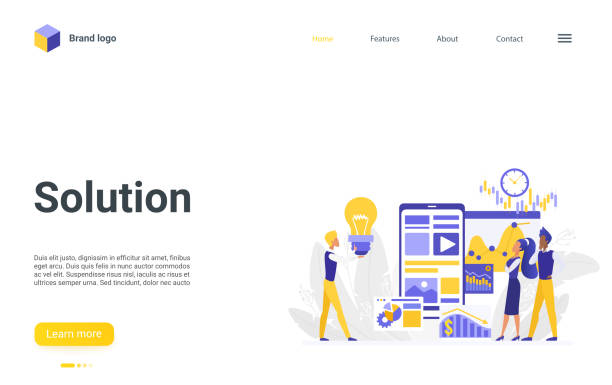
To implement a modern UI website design, designers and developers use a wide range of advanced tools and technologies.
These tools accelerate the design process and enable the creation of more complex and engaging user experiences.
In the UI design section, software such as #Figma, #Adobe_XD, and Sketch have gained tremendous popularity.
These tools allow for the design of high-fidelity wireframes, prototypes, and user interfaces and make team collaboration unprecedentedly easy.
Figma, due to its cloud-based nature and the ability for multiple users to edit simultaneously, is an unparalleled option, especially for remote teams.
Adobe XD, with deep integration with other Adobe products and powerful prototyping capabilities, is the choice of many professional designers.
In the field of development and implementation, the use of #frameworks and JavaScript libraries such as React, Angular, and Vue.js has revolutionized the creation of dynamic and interactive user interfaces.
These frameworks, by providing ready-made components and organized structures, accelerate the development process and simplify code maintenance.
In addition, Design Systems, which include a set of reusable components, visual guidelines, and design principles, significantly help in maintaining consistency and scalability in large projects.
User testing tools such as Hotjar or UserTesting are also essential for collecting feedback and continuously improving the user experience.
The emergence of Artificial Intelligence and Machine Learning has also opened new horizons in personalizing user experience and predicting user needs.
These technologies enable designers to create experiences that are not only beautiful and efficient but also smart and personalized.
Research shows that 80% of customers trust companies with professional websites more. Does your current website inspire this trust?
With Rasaweb’s corporate website design services, permanently solve the problem of customer mistrust and a weak online image!
✅ Create a professional image and increase customer trust
✅ Attract more sales leads and business growth
⚡ Get free consultation
Responsive Design and Mobile-First Approach

In the current era, where the vast majority of internet users access the web via mobile devices, modern UI website design is impossible without considering #Responsive_Design and the #Mobile_First approach.
Responsive design means that a website must be able to automatically adapt its layout and elements to the screen size of the user’s device, providing an optimal viewing and interaction experience on any device, from small smartphones to large desktop monitors.
This is achieved through the use of Media Queries in CSS and Flexible Layouts that use relative units instead of fixed units.
The mobile-first approach goes a step further than responsive design.
Instead of designing for desktop first and then scaling down to mobile (which often results in lost content or a poor user experience), in the mobile-first approach, design and development begin with smaller screens.
This means that designers and developers must focus on the most essential elements and functionalities of a website and then gradually add more features and details for larger screens.
This approach ensures that the core user experience and most important content are optimized for mobile users who may be in situations with less bandwidth or more distractions.
#Mobile_Optimization includes items such as appropriate font sizing, large tappable buttons, simple navigation, and high loading speed.
Google also places great importance on mobile compatibility and considers it a crucial factor in search ranking results.
Therefore, neglecting these two principles can not only lead to losing users but also negatively impact the website’s SEO.
Ensuring that your website performs and looks great on any device is one of the main keys to success in today’s competitive web landscape.
Visual Aesthetics and Brand Identity in Modern Design
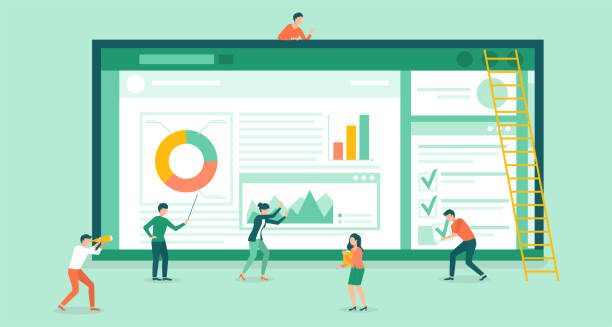
Visual aesthetics in modern UI website design play a crucial role in creating brand identity and establishing an emotional connection with the user.
Beyond a beautiful layout, effective visual design conveys the brand message and creates a consistent and memorable experience.
Choosing the right #Color_Palette is one of the first and most important steps.
Colors evoke specific emotions and can profoundly impact the user’s perception of the brand.
A harmonious color palette, consistent with brand values, gives the website a strong visual identity.
#Typography is also of particular importance.
The selection of appropriate fonts, font sizes, line spacing, and paragraph spacing all affect text readability and aesthetics.
Typography not only conveys information but also adds to the brand’s tone and personality.
Intelligent use of #White_Space (White Space), also known as negative space, is a powerful technique in modern design.
These spaces, intentionally left empty, help other website elements stand out, increase readability, and convey a sense of calm and order to the user.
This concept keeps the website free from clutter and gives it a clean and professional appearance.
Furthermore, the quality and style of images and videos used are highly important for visual appeal.
High-quality, content-appropriate images not only capture the user’s attention but also reflect the website’s credibility and professionalism.
Subtle animations and microinteractions can also add to the website’s attractiveness and dynamism without disrupting the user experience.
In summary, a comprehensive approach to visual aesthetics transforms a website from a mere collection of information into a rich visual experience and an effective touchpoint for brand identity.
Website Performance Optimization and Accessibility

Amidst intense digital competition, modern UI website design is not just about beauty and user-friendliness; it must also prioritize performance optimization and #Web_Accessibility.
#Website_Load_Speed is a critical factor that directly impacts user experience and SEO ranking.
Today’s users are highly impatient, and any delay in page loading can mean losing a visitor.
Methods such as #Image_Optimization (compression and use of next-gen formats like WebP), code compression (HTML, CSS, JavaScript), using Content Delivery Networks (CDN), and Caching all help increase loading speed.
Tools like Google PageSpeed Insights can identify your website’s performance weaknesses and provide solutions for improvement.
But optimization is not limited to speed alone; Web Accessibility means designing and developing websites in a way that people with disabilities can also effectively use them.
This includes individuals with visual, auditory, motor, or cognitive impairments.
Adherence to WCAG (Web Content Accessibility Guidelines) standards, published by the World Wide Web Consortium (W3C), is essential to ensure accessibility.
These principles include using alt text for images, semantic HTML structure, appropriate color contrast, keyboard navigation, and providing captions for audio and video content.
Not only is accessibility an ethical responsibility, but in many countries, it is also a legal requirement and helps expand your website’s audience.
A website with excellent performance and high accessibility is a sign of professionalism and commitment to providing the best experience for all users.
These two aspects complement each other and transform a modern website from just a beautiful design into a powerful and inclusive tool.
The table below highlights some key tips for optimizing performance and accessibility:
| Topic | Key Performance Optimization Tips | Key Accessibility Tips |
|---|---|---|
| Images and Media | Compression, use of next-gen formats (WebP), Lazy Loading | Descriptive Alt Text, captions for videos, audio descriptions |
| Code and Structure | Minify CSS/JS, use of CDN, browser caching, database optimization | Semantic HTML structure, keyboard navigation, logical content order |
| User Interaction | Fast responsiveness (low input lag), optimized animations | Sufficient controls for interactions (e.g., large buttons), focus management |
| Color and Contrast | – | Appropriate color contrast for text and background (WCAG AA/AAA) |
| Forms | Client-side validation, use of AJAX | Clear Labels, understandable error messages, logical navigation |
Testability and Continuous UI Improvement
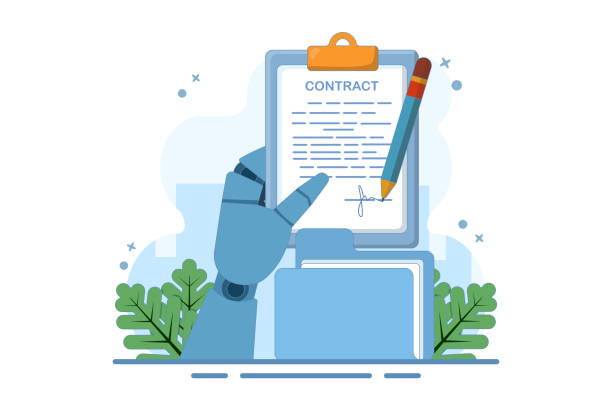
Building a modern UI website design is not a one-time process, but a continuous cycle of testing, feedback collection, and improvement.
After the initial implementation of a website, it is essential to evaluate its performance in the real world to ensure that the website not only functions technically but also delivers the intended user experience.
#Usability_Testing is one of the most effective methods for this purpose.
In this process, real users are invited to perform specific tasks on the website, and designers observe and record their behavior, interactions, and comments.
These observations can reveal hidden design flaws, navigation issues, or user confusions that may have been overlooked during the initial design phase.
In addition to usability tests, collecting #User_Feedback through surveys, contact forms, or analytical tools such as Heatmaps and Session Recordings also provides valuable information.
This data helps designers understand user behavior patterns and identify points where users encounter difficulties.
Based on this feedback and analytical data, the process of #Iterative_Design begins.
In this stage, necessary changes and improvements are applied to the design and then re-tested.
This continuous cycle ensures that the website is constantly improved and keeps pace with the changing needs and expectations of users.
Continuous optimization not only leads to increased user satisfaction but can also improve conversion rates and contribute to the long-term sustainability and growth of the website.
Ignoring the testing and feedback stage is a big risk that can lead to creating a website that is visually appealing but, in practice, inefficient and frustrating for users.
Do you dream of a thriving online store but don’t know where to start?
Rasaweb is your comprehensive e-commerce website design solution.
✅ Attractive and user-friendly design
✅ Increased sales and revenue⚡ Get free consultation
Future Trends in UI and UX Design
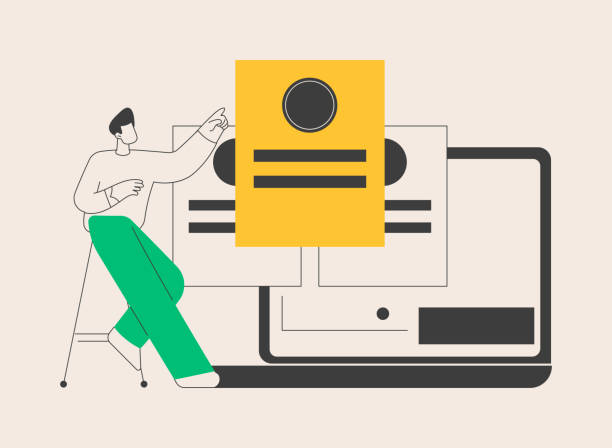
The world of modern UI website design is rapidly evolving, with new trends emerging each year that change the landscape of digital interactions.
Anticipating these trends is crucial for any designer and developer who wants to be a leader in this field.
One of the most significant future trends is the increasing role of #Artificial_Intelligence (AI) and Machine Learning (ML) in personalizing the user experience.
AI can dynamically adjust website content and features based on individual user preferences by analyzing user behavior, providing a highly personalized and relevant experience.
This will be particularly impactful in e-commerce and content platform sectors.
Another upward trend is #Voice_Interactions and Voice User Interfaces (VUI).
With the proliferation of voice assistants like Siri, Google Assistant, and Alexa, designing websites and applications to respond to voice commands is becoming increasingly important.
This presents a new challenge for designers to imagine how users interact with systems beyond screens.
Furthermore, #Virtual_Reality (VR) and Augmented Reality (AR) are expected to play a more prominent role in UX design, especially in areas such as education, gaming, and online shopping.
These technologies can offer immersive and three-dimensional experiences that transform traditional website interactions.
Motion Design and more complex animations are also expanding to create more dynamic and engaging user interfaces.
These animations can help guide user attention, provide visual feedback, and add to the entertainment aspect of the user experience.
Finally, focusing on Inclusive Design, which ensures websites are accessible and usable for all people, regardless of their abilities or limitations, will become a fundamental principle.
These trends indicate that the future of UI/UX design is exciting and full of innovations that will transform how we interact with the digital world.
For more information on future design trends, you can refer to websites like Interaction Design Foundation.
Conclusion and the Future of Modern UI Website Design
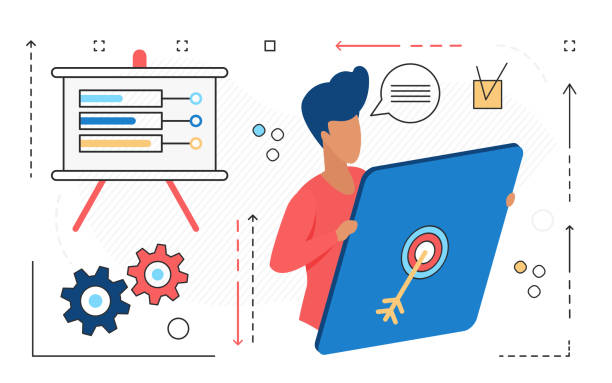
Throughout this article, we have comprehensively examined various aspects of modern UI website design.
From the fundamental importance of UI and UX and the key principles that shape successful design, to the vital role of user experience in website success, new tools available to designers, the importance of responsive design and the mobile-first approach, the place of visual aesthetics and brand identity, the necessity of performance optimization and accessibility, and finally, the continuous process of testability and improvement.
Each of these aspects forms a pillar of the structure of a modern and user-friendly website.
What is clearly evident is that today’s web design goes beyond coding and graphics; it is a complex and multifaceted process that requires a deep understanding of user psychology, current technologies, and business principles.
The future of modern UI website design is moving towards #Immersive_Experiences and smarter interactions.
With advancements in artificial intelligence, augmented reality, and virtual reality, human-machine interactions will become increasingly intuitive and personalized.
The #Role_of_the_Designer will also shift from merely creating visual interfaces to fully engineering experiences.
This means considering all user senses, anticipating their needs, and creating digital environments that seamlessly integrate into daily life.
Focus on #Progressive_Web_Apps (PWAs), which offer a combination of the best features of the web and native applications, as well as Headless UI, which provides more flexibility in development, are other trends that should be considered.
Ultimately, the success of a website in the future will depend, more than anything, on its ability to provide an unparalleled, efficient, and human user experience.
This is an endless journey of learning, innovation, and adaptation, but its reward will be user loyalty and sustained success in the digital world.
Frequently Asked Questions
| Row | Question | Answer |
|---|---|---|
| 1 | What does Modern UI in website design mean? | Modern UI refers to designing websites with a minimalist appearance, extensive use of white space, clear typography, vibrant colors or consistent palettes, subtle animations, and a focus on visual and intuitive User Experience (UX). |
| 2 | What features make a user interface “modern”? | Key features include responsive design, smooth animations, use of SVG vectors and icons, prominent typography, sufficient white space, creative layering, appropriate colors, and a focus on accessibility. |
| 3 | What is the importance of Responsive Design in modern UI? | Responsive design ensures that the website displays correctly on any device (mobile, tablet, desktop) and provides a consistent user experience, which is one of the fundamental principles of modern UI. |
| 4 | Why is the use of White Space important in modern design? | White space or “negative space” helps text and other elements breathe and be distinguishable, increases readability, boosts user focus on main content, and creates a clean and professional look. |
| 5 | What is the role of animations and microinteractions in modern UI? | Animations and microinteractions make the user experience more dynamic and engaging, provide feedback to the user, improve navigation flow, and add a sense of quality and polish to the design. |
| 6 | What is the place of typography in modern website design? | Typography plays a very important role in modern design; appropriate fonts, size, weight, and correct spacing improve readability and can impart a specific mood and personality to the brand. |
| 7 | How can visual uniformity be achieved in modern design? | By using a Design System, a limited and specific color palette, consistent typography, reusable UI components, and maintaining uniformity in spacing between elements and visual rhythm. |
| 8 | What is the relationship between User Experience (UX) and modern User Interface (UI)? | User Interface (UI) is the visual and interactive part of a product, while User Experience (UX) relates to the user’s overall feeling when using the product. A modern UI should contribute to improving UX and be functional and intuitive beyond visual beauty. |
| 9 | What are some common trends in modern UI design? | Trends include Dark Mode, Neumorphism, Glassmorphism, large and prominent typography, use of gradients, 3D illustrations, and Lottie animations. |
| 10 | What are the main challenges in modern UI website design? | Challenges include maintaining simplicity while innovating, ensuring accessibility, optimizing loading speed despite heavy animations and images, and balancing aesthetics with functionality. |
And other services of Rasaweb Advertising Agency in the field of advertising
Smart Sales Automation: Professional optimization to increase sales using attractive UI design.
Smart Advertorial: A combination of creativity and technology to increase click-through rates by using real data.
Smart UI/UX: Professional optimization for user interaction through user experience customization.
Smart Social Media: An effective tool for online growth with the help of marketing automation.
Smart Digital Branding: An exclusive service for increasing customer acquisition based on the use of real data.
And over a hundred other services in the field of internet advertising, advertising consultation, and organizational solutions.
Internet Advertising | Advertising Strategy | Advertorial
References
Principles of Modern UI DesignGuide to Optimal User Experience in Website DesignComprehensive Guide to Website Design with Unparalleled UXArticles: Principles of UI/UX Design
? Are you looking for a big leap in your online business? Rasaweb Afarin paves your way to success by offering comprehensive digital marketing services including fast and professional website design, SEO, and social media management. With us, experience a powerful and impactful presence in the digital world.
📍 Tehran, Mirdamad Street, next to the Central Bank, Kazeroun South Alley, Ramin Alley, No. 6

